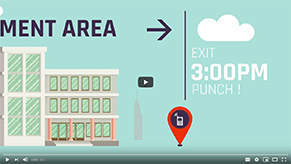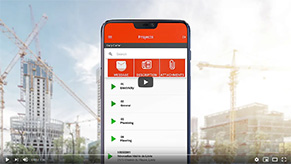
29 September, 2022
Mobile-Punch
SHARE
How to reduce costs in a construction project
How much do construction projects cost? In general, the price depends on several variables such as location, size, materials used, etc. As you can imagine, it requires a lot of investment. A home or office building project usually starts with a design phase where architects and engineers come together to create blueprints and other drawings.
The next step involves the actual construction of the building itself. This is the point at which contractors, subcontractors, suppliers, materials, and equipment providers get involved. There are several things that you can do to minimize the cost of a construction project. For example, you can hire a contractor who has experience in low-cost construction. In this article, we share expert tips to minimize the cost of your construction project.
What are the most common reasons why construction costs get expensive?
Construction costs can get out of control very fast. In fact, it happens about 85% of the time. There are many reasons why construction costs get out of hand, including poor management, lack of experience, and a failure to plan properly.
Poor management
Poor management leads to wasted resources, such as time, energy, and money. For example, if you hire unqualified employees, your payroll expenses will increase. Similarly, if you fail to keep track of your finances, you could end up paying taxes and penalties. Also when management is unable to control workers and their time effectively, it leads to slower productivity and increased costs.
Poor planning
Many people think that they can just wing it when they start working on a project but this approach doesn’t usually lead to success. Instead, you should make sure that you follow a detailed blueprint. Doing so will help you avoid costly mistakes. Construction projects are notoriously difficult to predict.
They require months of planning, design, bidding, and execution, and even small changes in scope or materials can add significant expenses to the overall project. Did you know that nearly half of large construction projects run over budget? In some cases, contractors underbid jobs because they didn’t realize how much work was involved but sometimes, the problem isn’t a lack of knowledge; it’s poor communication between the client and the contractor.
Hiring the wrong workers
Not hiring the right people can impact your ability to meet deadlines and perform well under pressure. If you are having trouble finding qualified candidates, consider outsourcing some of your projects. This way, you can focus on what you do best – running your business.
Hire only those individuals who have a track record of success, as anything short of perfection will incur increased labor costs. Look for workers who have been successful in previous jobs and ask about their experience. Ask how many times they have completed similar tasks and whether they have ever had to deal with similar situations. Find out if they know how to communicate effectively with clients and how they handle stress.
Human errors
Human errors happen every day. Whether it’s a worker dropping something, a machine breaking down, or someone making a mistake while doing their job, there are times when things go wrong. When that happens, it’s important to understand how much it costs you and what steps you can take to avoid those mistakes.
Weather delays
Construction projects are often delayed by factors outside of the control of contractors. Weather conditions, including hurricanes, tornadoes, floods, earthquakes, landslides, and snowstorms, are just some examples of things that can delay projects.
This causes problems because most contracts require work to be completed within a certain timeframe. When deadlines are missed, contractors may resort to cutting corners on quality or making mistakes. These actions may increase the overall average cost of the job.
Importance of improving profitability for construction projects
The importance of improving profitability on a construction project cannot be overstated. If you don’t have a positive bottom line, it doesn’t matter how much work you do, you won’t be able to grow your business.
When it comes to running a successful business, building projects always seem to be a good investment. However, most businesses don’t realize how much work goes into getting a job done. There are many factors involved, such as hiring employees, purchasing materials and equipment, managing subcontractors, paying taxes and insurance, and keeping up with regulatory requirements, which all incur direct and indirect costs.
On top of that, there are often unforeseen expenses like unexpected weather conditions or problems with the job site itself. These factors add up quickly, especially when you factor in the cost of labor, overhead, and profit margins. So, even though a job looks easy enough on paper, it actually takes quite a lot of effort to complete it successfully.
The key to making the best use of every dollar spent on a job is to maximize profits while minimizing losses. This is where using lean principles can help. Lean management techniques focus on reducing waste, increasing efficiency, and improving customer satisfaction. By adopting these strategies, you can save time and money, which ultimately leads to increased profitability.
Improve your profitability with project management software
9 ways contractors can reduce costs on construction projects
Costs in construction can vary greatly. Each construction phase has its own costs attached to it. Thankfully, there are different things that you can do to make the building phase more cost-effective. Below are some expert tips for contractors to reduce costs on construction projects.
Buy in bulk
Many suppliers offer discounts for larger purchases. Buying materials in large quantities saves money on transport costs and allows you to buy the best quality products for less. If you buy in small amounts you are likely to be paying more for inferior products. Buying in bulk also reduces the risk associated with construction materials running out of stock.
Reduce scope
It’s important to set realistic expectations for any type of project. If you’re able to clearly define them, you’ll be better equipped to manage your time and resources efficiently. When planning a new building, consider the financial constraints you must work within and identify design choices that may increase the overall costs of the building. Be clear with your client about any potential issues so they know that you’re working within their budgets. During the design phase, you can cut down on unnecessary features that would add to the final price tag.
Plan for risks
When you’re still in the pre-project phase, it’s critical to identify potential risks that might hinder the project, as these will incur extra project costs. By spending time upfront planning how to mitigate these risks, you’ll save yourself headaches down the track.
While there are many ways to do this, a risk assessment matrix is one of the best ways to go about it. You can list all of the potential risks associated with your project, and then rank them according to their importance. Once you’ve done this, you’ll know where the risks lie in terms of their likelihood and impact.
You can use this information to prioritize the risks and determine what actions you need to take to mitigate them. For example, if one of your biggest concerns is whether your client will deliver on time, you might want to make sure you include a contingency clause in your contract or add a penalty clause to your payment schedule.
Reduce complexity
Reducing project complexity is another simple way to save money during the planning and designing stages of a building project. Complex designs often require more time and materials than simpler ones. You can examine your plan carefully to identify areas where there is unnecessary complexity and work to remove them. Doing so will help you save time and energy during the actual building phase, and it might even make for a smoother, easier building experience.
Consider material alternatives
It’s important to consider different types of construction materials when designing a building or home. Some materials are cheaper than others but they may not be suitable for certain projects. Also, some materials are more energy efficient than others.
How to protect against unexpected increases in building material costs?
Reduce construction waste by using reusable materials whenever possible
Waste is the ultimate enemy when it comes to savings. So, if you want to cut costs, it’s important to avoid wasting materials whenever possible. Instead of discarding unused materials, try to recycle them whenever possible. Doing so will help you get the most out of every item, which is especially important during times of fluctuating material prices and overall economic inflation. Reduce your environmental impact by recycling any material you can. Reuse old items instead of throwing them out.
Streamline communication
Communication is key to successful building projects. Whether you’re communicating with clients, contractors, or subcontractors, clear communication helps keep everyone on the same page. In addition, keeping track of expenses is crucial to ensuring that money doesn’t get wasted. That’s why it’s so important to communicate frequently with all parties involved in a construction project.
As you’re working through your building project, be sure to keep communicating with your clients and any other builders regularly. You can use the Mobile-Punch app for project management and employee time tracking. Many companies in the construction sector trust our solution to optimize their operations and save money.
Learn more about the services and advantages of Mobile-Punch
Properly manage subcontractors
Subcontractor rates may vary widely, so negotiating them can help bring your overall project budget down and save you some cash. Find the right mix of skills and experience for your needs. When hiring an architect, builder or engineer, consider how much experience they have, what kind of projects they’ve worked on before, and whether they’re willing to take on jobs outside their usual area of expertise. Ask if they’ll recommend a professional who specializes in similar services. And find out if they offer any guarantees on their work.
Invest in project management software
As we have highlighted, poor management is a key reason why the cost of construction projects is high. If you want to achieve maximum cost reduction whilst also improving the efficiency of the operations of your construction company, you should invest in a time and project management software.
Mobile-Punch saves thousands of construction companies time and money. Our centralized app offers you access to the following key features:








